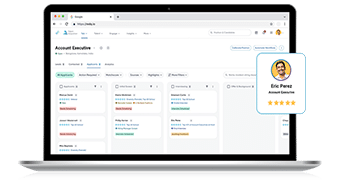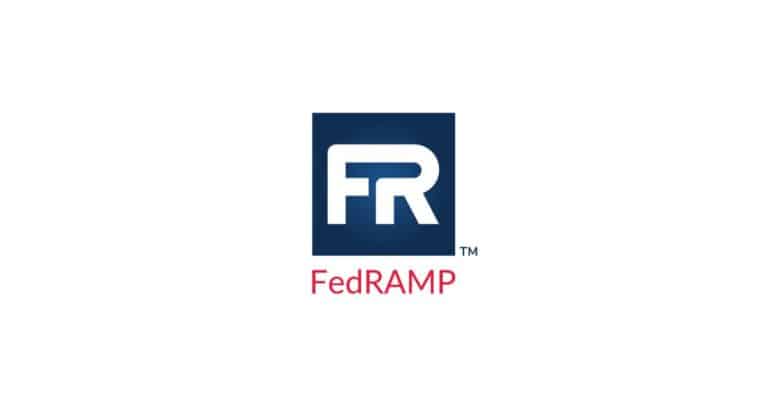- When HR works as a proactive consultant, businesses are better positioned to accomplish their strategic objectives.
- And yet, a recent survey found that there’s often a disconnect between HR and strategy, leading to misunderstandings throughout organizations.
- Talent intelligence can provide personalized guidance to organizations, enabling HR teams to be proactive and predictive as they work toward their greater goals.
When HR and business strategy work in sync, organizations can drive key initiatives, attract top talent, and secure long-term success. Yet, a global disconnect between the two often leads to misalignment and employee misunderstandings, hindering progress.
That’s the finding of our Annual Eightfold Talent survey conducted with 3Sixty Insights on HR and talent strategy, which polled 1,700 people across the globe.
When a department such as HR isn’t valued, it can create cracks in the overall business, said Dylan Teggart, Principal Analyst with 3Sixty Insights.
“If there’s a strategic misalignment and HR is sidelined as being an administrative apparatus, you’re going to have a lack of support with new initiatives,” Teggart said. “HR should be used as a strategic arm that has the skillset to bring on the right people who are going to make good decisions. Those micro-decisions are going to add up to a business that is effective.”
Recently, Teggart joined Jason Cerrato, VP, Talent-centered Transformation at Eightfold, to discuss the survey findings and consider ways that talent intelligence can help align workforce strategies with overall strategies.
Related content: Dylan Teggart, Principal Analyst with 3Sixty Insights, talks about the friction in communication between leadership and employees when it comes to career growth opportunities – one of the key findings in the Annual Eightfold Talent Survey.
Room for improvement between HR and business strategy
When it comes to overall business strategy, while just over half (53%) of HR workers said they are fully involved from the outset, there is room for improvement.
Remaining respondents said:
- 35% were consulted during strategy development.
- 11% were informed after decisions are made.
- 1% had minimal or no involvement.
When HR isn’t fully involved and invested in overall business strategy, Teggart said, it can feel like “two ships passing in the night.”
In other words, when misalignment occurs, business leaders and HR leaders generally have their own individual goals, but they don’t make an effort to ensure they’re on the same page.
That can potentially weaken the organization.
“You’re either going to hire the right people from the start or you’re not. You’re either going to value your roster of players or you’re not,” Teggart said. “And if you’re not, you’re going to constantly have little holes in your ship.”
To strengthen as an organization, the leadership team must work with HR to identify the organization’s needs in terms of employees and what their goals are for those workers.
HR should be involved in strategic initiatives
The survey found HR and the C-suite tend to have good collaboration on strategic initiatives, but there is always room for improvement.
The survey found:
- 52% said they collaborate regularly.
- 38% said they collaborate occasionally.
- 10% said they collaborate rarely.
None responded that there is no collaboration.
When establishing long-term business plans and setting goals, the C-suite and HR should be in lockstep. Otherwise, it’s challenging to build the right teams of people who are going to be a part of those initiatives for the next three years, or five years, or 10 years.
When businesses don’t have the right roster, they undergo constant “brain drain,” Teggart said, and the continual turnover and loss of expertise puts extra stress on the business.
“Do you want to be focusing on hiring, or do you want to be focusing on hiring the right people that are going to take you on that journey to where you want to be as a business?” he asked.
When working to steer a business in the right direction, simply “informing” HR isn’t enough, Cerrato added. Rather, to be effective and strategic, the HR team should act as consultants on a regular basis.
“They’re proactive, predictive, and driving, vs. being transactional and reactive,” Cerrato said.
Related content: Jason Cerrato, VP, Talent-centered Transformation at Eightfold, shares how talent intelligence has the opportunity to positively impact business goals.
Understanding how talent benefits business objectives
The survey also asked HR leaders about how their talent strategy aligned with business objectives.
- 44% said it was fully aligned.
- 43% said it was mostly aligned.
- 11% said it was partially aligned.
- 2% it was not aligned.
Fewer than half of respondents said their talent strategy fully aligned with business objectives, and that’s worrisome. After all, if the right talent isn’t in place to drive the organization forward, there’s no doubt that challenges will arise down the line, and those can be difficult to solve in the moment.
“You don’t want to be building the car as you drive it,” Teggart said . “You want to make sure you have the right team of people on board to get it done. And then execute your strategy from there.”
When the three survey questions listed above are taken together, the degrees of misalignment businesses are grappling with across the globe becomes even more clear. Only 18% of HR departments are effectively coordinating in the three critical areas: business strategy development, talent strategy alignment, and C-suite collaboration.
That means fewer than one in five HR teams regularly collaborate with other business leaders in a way that helps them drive the organization forward.
In absence of true partnership with HR, Teggart warns, businesses should brace for disappointing long-term results.
“A poor strategy that leaves out HR translates down to the people who then have to pick the people to do the jobs,” Teggart said. “If at every step you’re losing some knowledge or some communication, you’re going to have people that are either unhappy at work or are not doing the work properly. Over time, it’s going to degrade your ability to make effective plans and strategies.”
Of course, identifying the problem is the first step to solving it. That begins with engaging the talent you already have.
HR teams value worker retention and skills
Another survey question polled HR respondents on the most important factors in achieving their business objectives. Some of the leading responses included:
- 50% said retaining top performers.
- 40% said understanding skills and capabilities across your workforce.
- 38% said building a diverse workforce.
- 37% said hiring external candidates.
- 36% said hiring and retaining skilled trade labor.
The leading responses—retaining top performers and understanding the skills and capabilities of your workforce—often go together. Teggart said that getting into a strategic mindset about skills and skill-based hiring consistently rank as areas where HR wants to improve.
At the same time, however, employees who were surveyed don’t feel as though their skills are aligned with the work at hand, with 82% saying they had been looking for jobs in the last 12 to 18 months.
“I believe that may be because they don’t like where they work, but they also may have been hired for the wrong reason and they’re not being used effectively at work,” Teggart said. “That’s where understanding skills becomes important.”
Employees, he adds, are so much more than a single set of skills. And when HR teams understand those skills better, they can readjust jobs and even restructure teams in a way that peoples’ skills complement one another, and employees are more satisfied with their work.
“Skills are going to help close gaps,” he said. “When you’re mixing the ingredients that you have on your roster they can sometimes come together to make interesting solutions to challenging problems.”
Talent intelligence can help HR achieve their objectives
HR teams everywhere have access to AI and data that can help them improve strategic planning and better address their workforce needs. But many talent professionals still aren’t sure how to put that data to work.
Cerrato said that’s where talent intelligence comes in.
“Talent intelligence affords the ability to make better sense of your organizational data. It allows for the incorporation of market data and external data in a context that’s relevant to your industry,” he said. “Whether you’re an applicant, a candidate, an employee, or a manager, it can help with a variety of things around matching jobs, envisioning career paths, connecting skills to new roles, and so more.”
Further, talent intelligence is dynamic and learns more about an organization with time, offering personalized guidance to the organization and enabling HR teams to be proactive and predictive as they work toward the greater objectives.
“We’re seeing how tools like talent intelligence are starting to help some organizations that are on this journey in dealing with the rapid pace of change, trying to create better alignment, and trying to connect some of the wants and needs of their workforce with the demands and challenges of their business,” Cerrato said.
Watch the webinar “Aligning the path forward: How talent intelligence brings HR and business strategy together” on demand now.










